The analytical chromatography data system ChromStar 7
- Manufacturer-independent device control
- GLP GMP FDA 21 CFR Part 11
- Audit trails and user administration
- Signing chromatograms, sequences and methods
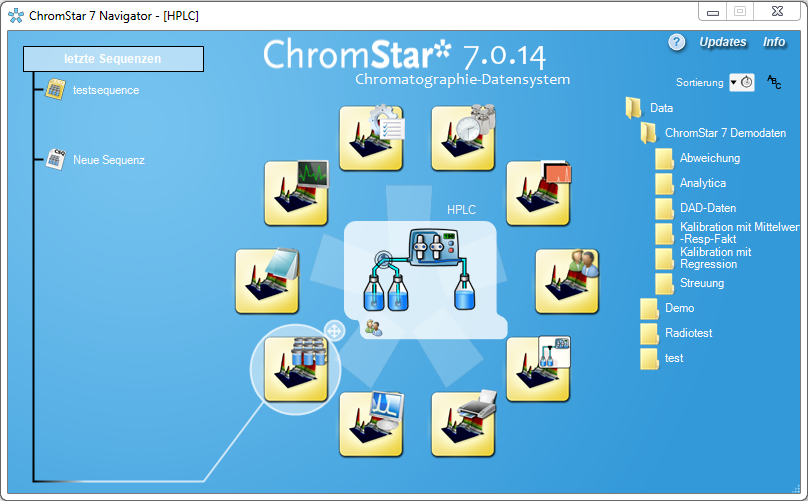
ChromStar 7 Details
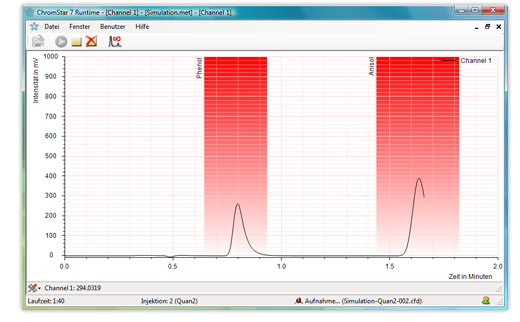
ChromStar 7 Data acquisition
Data acquisition in ChromStar 7 is powerful and easy to use. A method is required for data acquisition in which all data acquisition parameters, such as autosampler programming or acquisition run time, are specified. Interval storage of raw data prevents data loss, even in the event of a power failure or computer crash. Peak windows can also be displayed during runtime since version 7.
ChromStar DAD
The DAD option allows the control of a diode array detector and the acquisition of a two-dimensional data set. In parallel to the data acquisition with the diode array detector, data from another detector can be acquired in one or two channels with the ChromStar A/D converter. The chromatograms of the data tracks of the diode array detector have the format of ChromStar chromatograms and are therefore fully compatible. During data acquisition, it is possible to switch between displaying chromatograms or the DAD data set. The software allows the DAD data set to be displayed in a variety of ways. In the colored intensity display, the display of chromatograms and spectra is possible via selection using a crosshair. In der 3-D-Darstellung eines Datensatzes kann der Blickwinkel beliebig geändert werden, so dass alle Teile des Datensatzes eingesehen werden können. In einer Split-Screen-Darstellung wird über die Cursorposition im Chromatogramm das dazugehörige Spektrum dargestellt und umgekehrt. Aus einem Datensatz können die Spektren aller Peaks in einem Schritt ausgewählt und gespeichert werden. Peak purity calculations can be performed by specifying different algorithms.
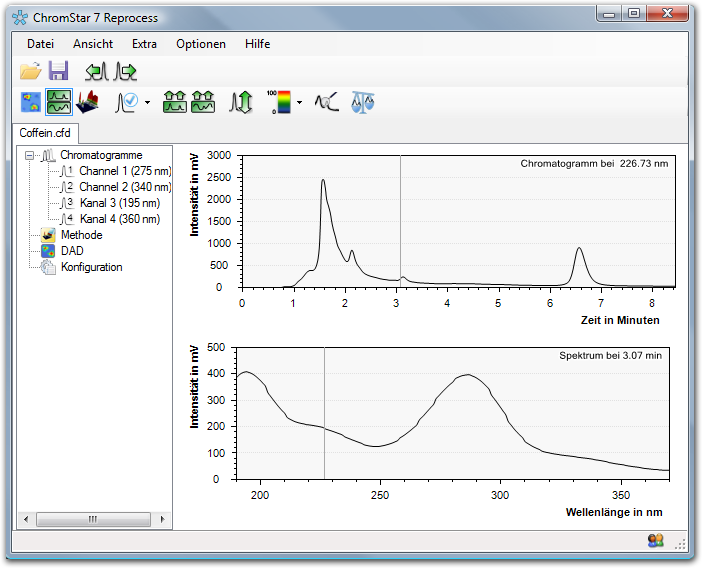
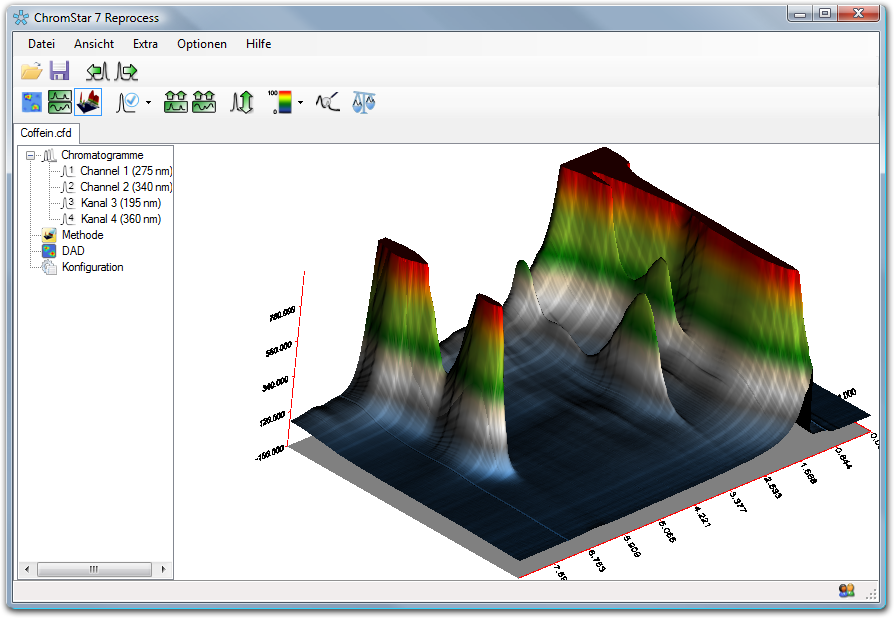
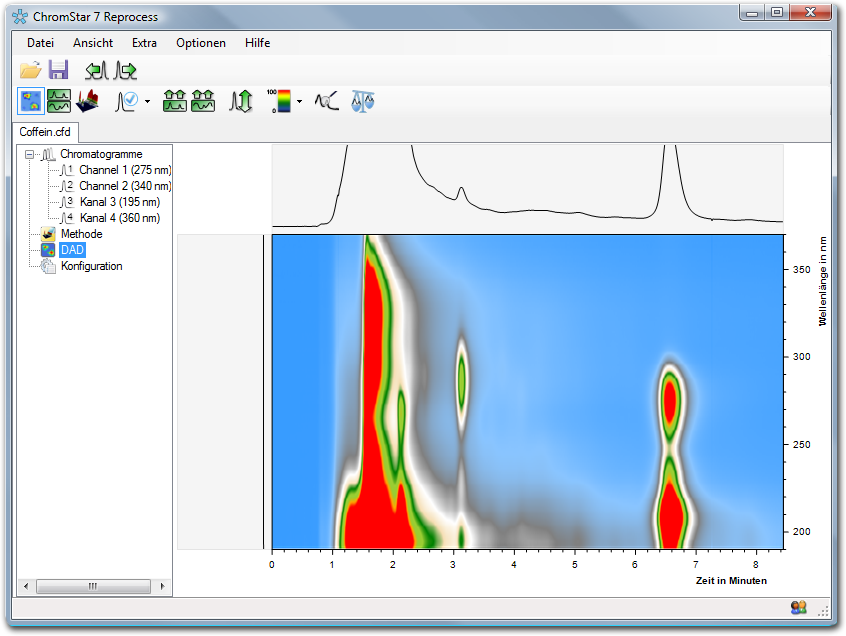
Device Control
Usually an HPLC chromatography system needs to be controlled during data acquisition (pump, autosampler, UV detector etc…). Here again ChromStar offers a flexible solution. The different devices can communicate together with our chromatography software via a MultCom interface developed by us.
Visualisation
To get an optimal overview of the current status of the periphery, individual device visualizations can be created. The visualizations can be created comfortably with the associated visualization editor.
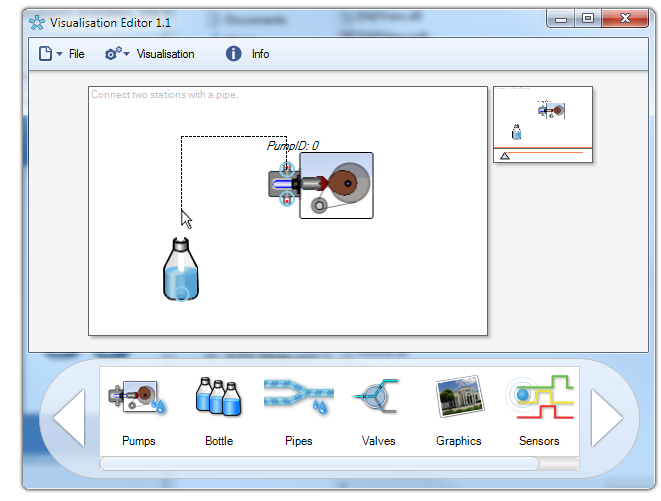
Method editing
The method contains data acquisition parameters, parameters for instrument control, the documentation with all data relevant values for the analysis and all chromatograms used for calibration.
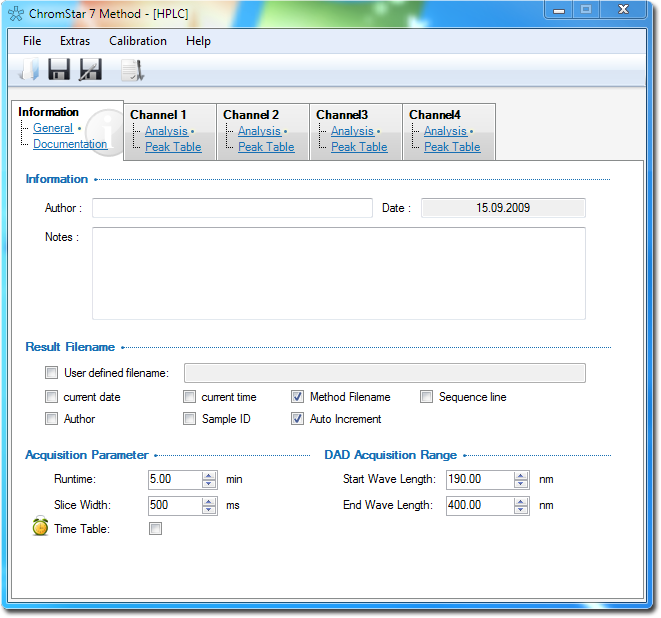
ChromStar7 offers the user a number of Tool:
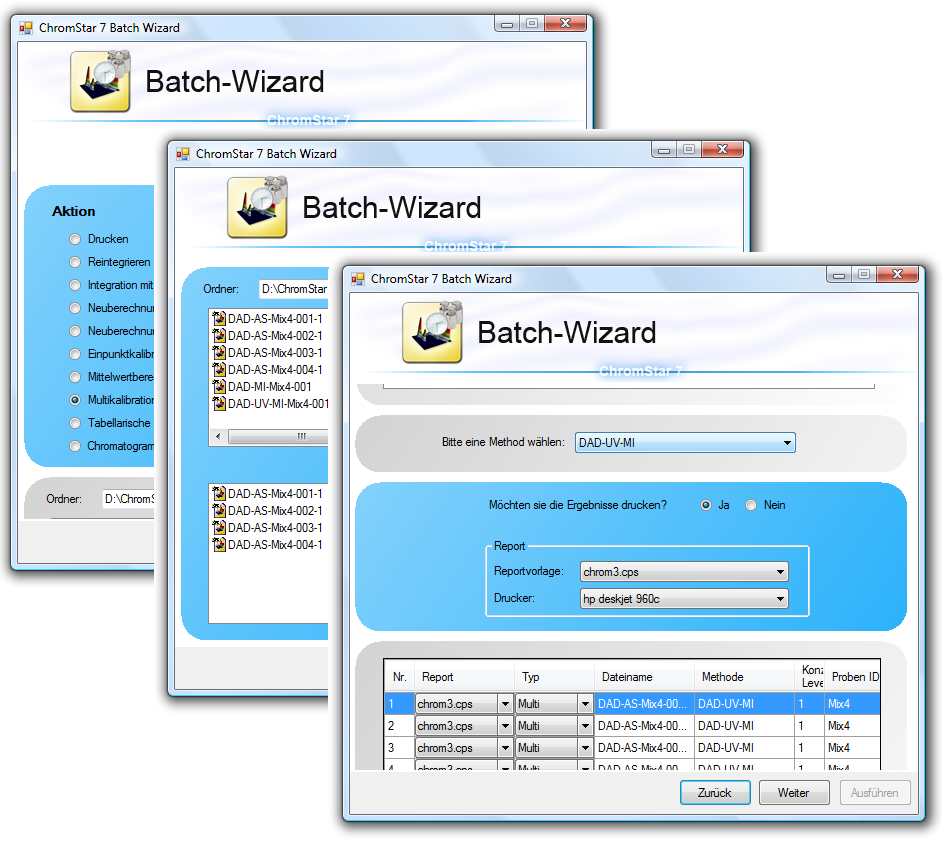
The Batch Wizard guides the user through calibrations, serial evaluations, serial printing, chromatogram comparisons and much more. The choice of directories, files, required parameters and method settings is prompted step-by-step, depending on the task at hand.
The Navigator supports graphical selection and editing of result data and methods, loading and running analyses in systems using ‘drag and drop’, and shows the overview of all ChromStar modules, the last methods used and data generated.
With the Configurator, all necessary configuration parameters and data channels of a chromatographic system can be entered via a graphical interface.
The Visualization-Editor is used to generate an image of the chromatography system that appears in the data acquisition module in the control window and displays all relevant instrument parameters.
The Skin-Editor is used to graphically design the appearance of the chromatograms. Various styles are available.
Integration
Easy-to-use integration parameters ensure reliable automatic, manual and combined integration, i.e. automatically integrated chromatograms can also be processed manually directly from reintegration. Labeling of chromatograms with peak numbers, retention times, peak names and/or any text facilitates the user’s work.
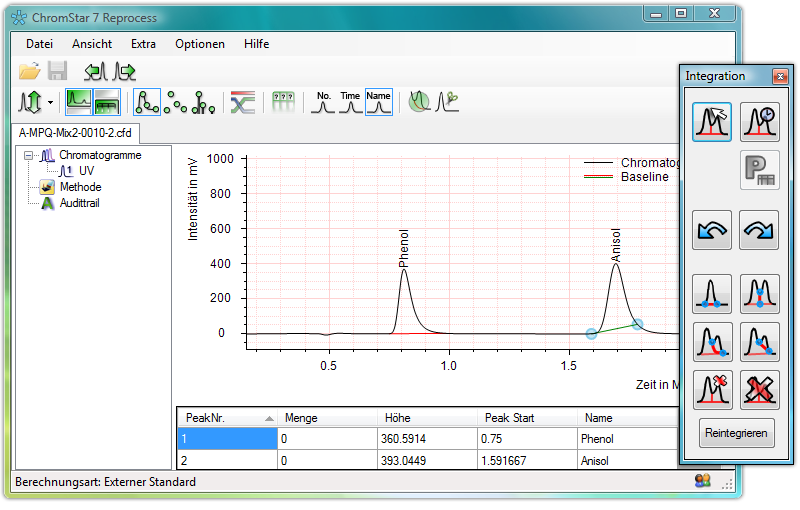
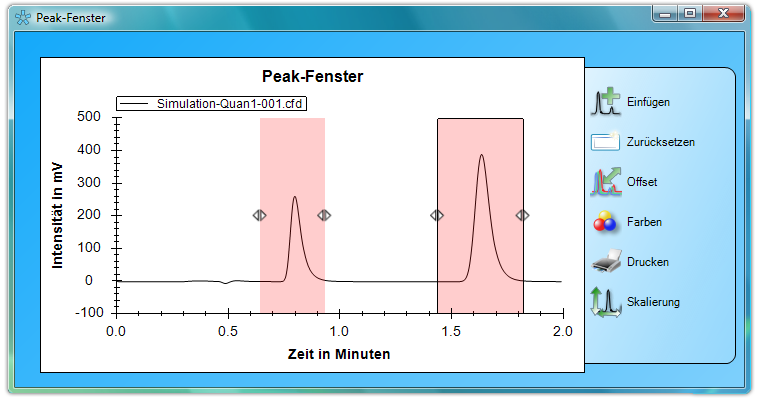
Calculation
Numerous auxiliary functions facilitate the creation of the peak tables required for quantitative evaluation. Our graphical peak table editor allows the precise adjustment of the peak windows to the respective chromatogram and takes into account the variance of the retention times by reading in and displaying chromatogram series.
You can perform single-point and multi-point calibrations, using first-, second- and third-order multi-point curves for calculation. Grouping and summation of individual peak groups within the chromatogram are available for the evaluation of complex substance mixtures. The determination/calculation of column characteristics is also implemented in the software.
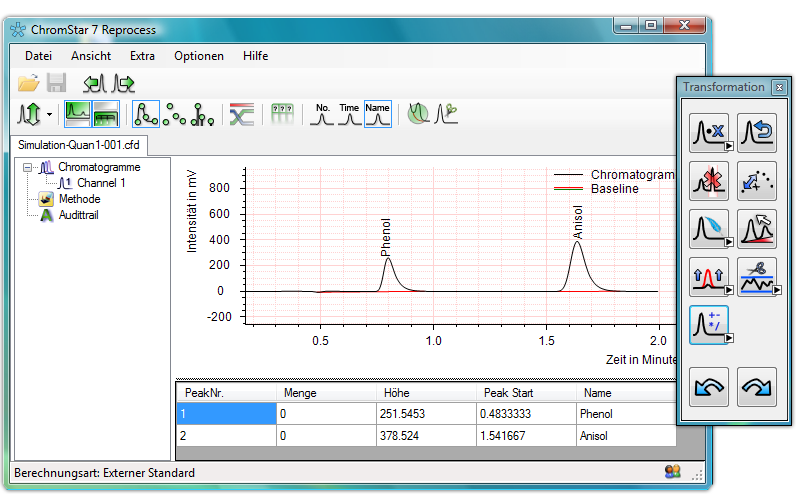
Transformation
Extensive mathematical functions allow ratio, sum and difference calculations as well as the concatenation of 2 chromatograms. Removal of spikes considering their peak width and peak enhancement are used for the computational improvement of peak separations and for the detection of hidden peaks. Further functions such as smoothing, rescaling and inverting chromatograms, the formation of the 1st and 2nd derivative, digital filter functions to reduce noise as well as automatic or manual baseline correction round off the mathematical processing options for you.
Report-Editor
With the report editor you can create individual report templates. From a number of objects, such as the chromatogram, the results list, the method, data acquisition and evaluation parameters, graphics, external files and much more, you can create an individual print report, whereby the current parameter values are automatically taken from the chromatogram to be printed. Supplied standard templates can thus be modified and adapted.
The display options are thus extremely diverse and flexible.
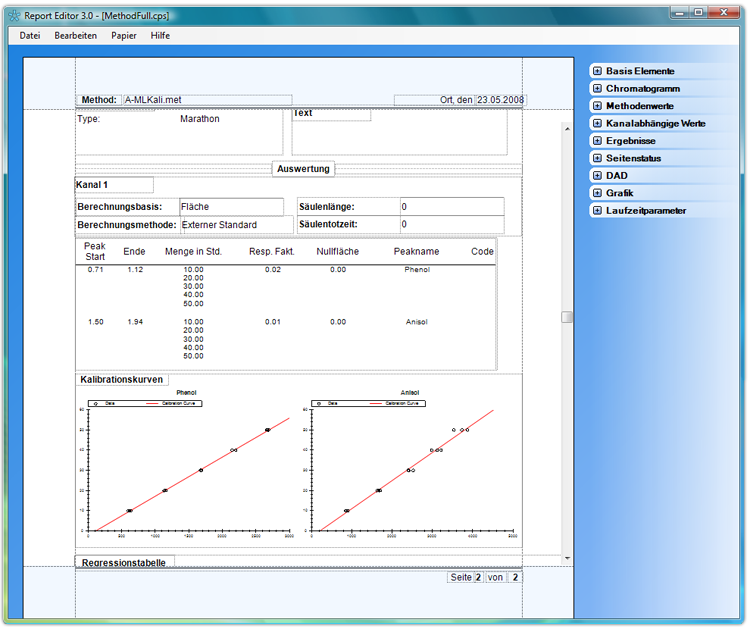
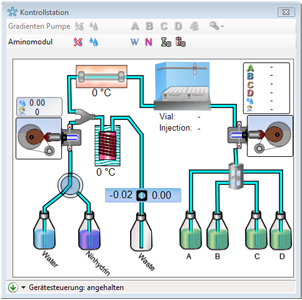
Example PlugIn: Amino Modul
PlugIn for the control of a “Sykam Amino
Acid Reaction Module”. With the use of this PlugIn ChromStar gets
additionally provides the following functions: – – Reagent pump
– reagent valve
– Solvent level indicator
– Column oven
– reactor
– Amino detector control
ChromStar 7.0 PlugIns
With the current ChromStar version it is possible to include extensions, so-called “PlugIns”, with which special new functions can be executed. In addition to the following components:
– AD converter
– Ethernet box (network data source)
– Diode array detector
– Solvent delivery system
– autosampler
– detector
– valves
– event control
any other components can be added to the system via the PlugIn control.
ChromStar 7 History
ChromStar was one of the first MS Windows-based chromatography data systems to be introduced under Windows Version 2 by Bruker-Franzen. Since 1994, ChromStar has been maintained by SCPA and always kept at the highest possible technical level, so that it can continue to be presented as a role model in terms of performance and ease of use. Today, a modernly designed program developed in Visual C++ and .NET is available, which can be used under the current user interfaces Windows 2000 , Windows XP and most recently Windows Vista. Thanks to the great flexibility of ChromStar, all gas or liquid chromatography tasks can be easily solved in compliance with GLP guidelines. The DAD option allows the control of a diode array detector and the acquisition of a two-dimensional data set. Additional algorithms are available for special procedures (e.g. in thin layer chromatography or gel permeation chromatography). A variety of additional programs perform tasks such as validations or downstream calculations from chromatogram series and much more. It is only a small leap to convenient, automated data processing. Talk to us. We look forward to hearing about your very specific requirements.
All the advantages of networks can be used with ChromStar without restrictions. National and international regulations, such as 21 CFR Part 11, are fully supported.
In version 7.0, ChromStar has been completely redesigned and restructured. The newly developed concept makes ChromStar even easier and faster to use. A great deal of attention has been paid to file management. Whereas in the previous version (< 6.4) several files were needed for analysis, methods editing and data recording, ChromStar 7 has only two file types: For the definition of an analysis, only one method is needed, in which the parameters of all operations are stored, starting with data acquisition and device control, through evaluation to report generation and documentation. Together with the measurement data, all instrument parameters and events during data acquisition as well as the method are stored in the result file. Therefore the result file contains all information to reproduce an analysis. In order to be able to use ChromStar even more flexibly, it has been divided into various individual modules. For example, up to 4 systems can be controlled centrally from one computer. To enable the user to access the various modules quickly and effectively, an additional component has been developed: The Navigator. With it, all actions can be executed by means of simple mouse operations (drag & drop).
